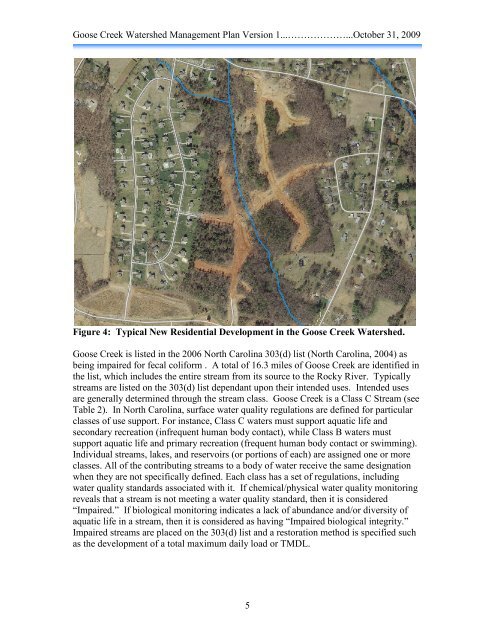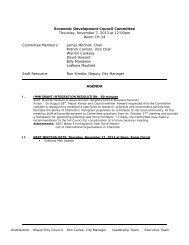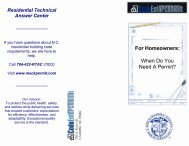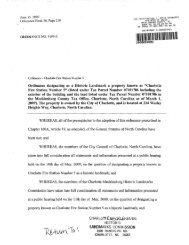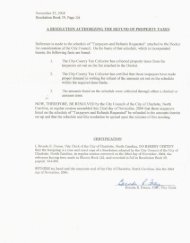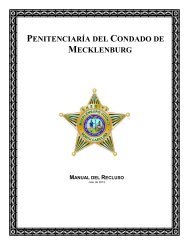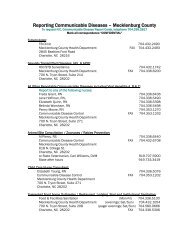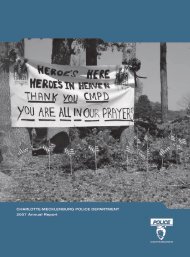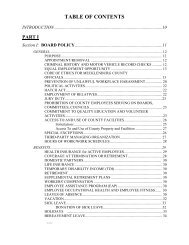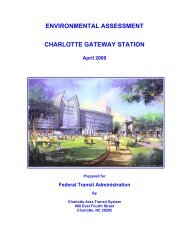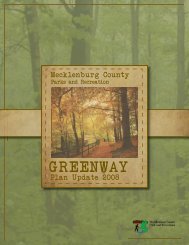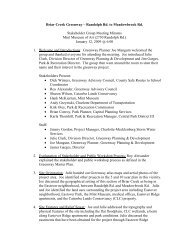Goose Creek Watershed Management Plan Version - Charlotte ...
Goose Creek Watershed Management Plan Version - Charlotte ...
Goose Creek Watershed Management Plan Version - Charlotte ...
Create successful ePaper yourself
Turn your PDF publications into a flip-book with our unique Google optimized e-Paper software.
<strong>Goose</strong> <strong>Creek</strong> <strong>Watershed</strong> <strong>Management</strong> <strong>Plan</strong> <strong>Version</strong> 1...………………...October 31, 2009<br />
JOLI CHEVAL<br />
PRAIRIE HILL<br />
HEATH GLEN<br />
JOLI CHEVAL<br />
TWINLEAF<br />
HEATH LAKE<br />
WINTER HEATH<br />
EARLY MEADOW<br />
OXER<br />
Figure 4: Typical New Residential Development in the <strong>Goose</strong> <strong>Creek</strong> <strong>Watershed</strong>.<br />
<strong>Goose</strong> <strong>Creek</strong> is listed in the 2006 North Carolina 303(d) list (North Carolina, 2004) as<br />
being impaired for fecal coliform . A total of 16.3 miles of <strong>Goose</strong> <strong>Creek</strong> are identified in<br />
the list, which includes the entire stream from its source to the Rocky River. Typically<br />
streams are listed on the 303(d) list dependant upon their intended uses. Intended uses<br />
are generally determined through the stream class. <strong>Goose</strong> <strong>Creek</strong> is a Class C Stream (see<br />
Table 2). In North Carolina, surface water quality regulations are defined for particular<br />
classes of use support. For instance, Class C waters must support aquatic life and<br />
secondary recreation (infrequent human body contact), while Class B waters must<br />
support aquatic life and primary recreation (frequent human body contact or swimming).<br />
Individual streams, lakes, and reservoirs (or portions of each) are assigned one or more<br />
classes. All of the contributing streams to a body of water receive the same designation<br />
when they are not specifically defined. Each class has a set of regulations, including<br />
water quality standards associated with it. If chemical/physical water quality monitoring<br />
reveals that a stream is not meeting a water quality standard, then it is considered<br />
“Impaired.” If biological monitoring indicates a lack of abundance and/or diversity of<br />
aquatic life in a stream, then it is considered as having “Impaired biological integrity.”<br />
Impaired streams are placed on the 303(d) list and a restoration method is specified such<br />
as the development of a total maximum daily load or TMDL.<br />
5<br />
LAWYERS<br />
FOX HOLLOW<br />
HELENA<br />
THOMPSON<br />
BAIN SCHOOL


